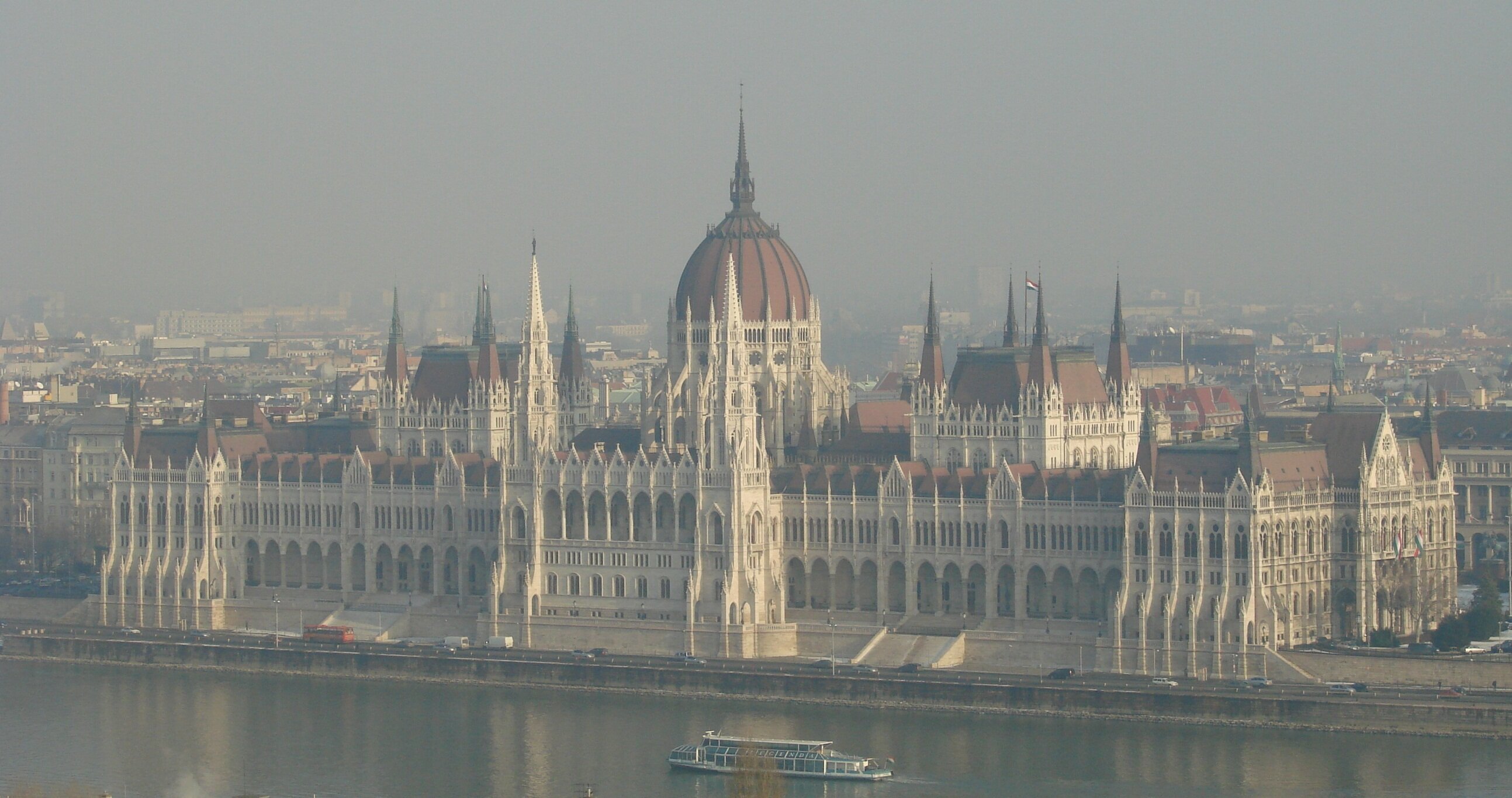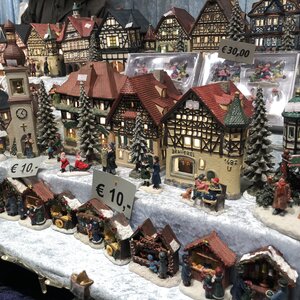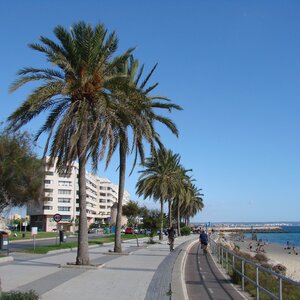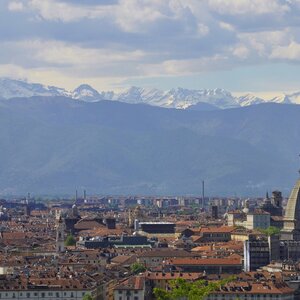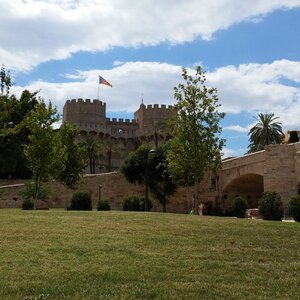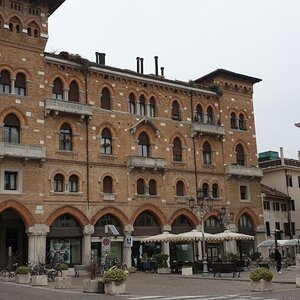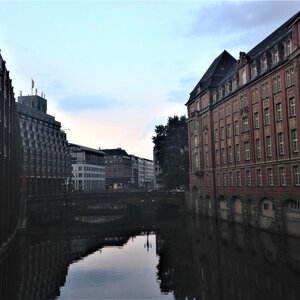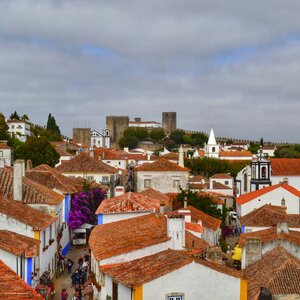The first buildings on the territory of the present-day capital of Hungary appeared in the first century BC. Until the middle of the XIX century in Austria-Hungary there were three separate cities: Buda — on the hilly bank of the Danube, Pest — on the flat side and Obuda — the historical center of Buda, the oldest part of the city, its suburbs. In 1873 they were united, so the Hungarian state got its capital Budapest. During World War II, the city was destroyed, and it took 20 years to rebuild it.
The masters of these lands were Romans, Huns, Avars and Hungarians. Almost all castles, walls and churches were rebuilt from scratch several times, and after the Second World War the city was rebuilt almost entirely.
Due to the fact that the city united several settlements that developed independently of each other for many centuries, there is no single compact historical center. There are no sights left in Obuda, but even a glimpse of the main historical sites in Buda and Pest is quite difficult to see in one day.
I will tell you about the most interesting sights of the city, which will take two days to see, and the third day I recommend you to visit the thermal baths or one of the museums: thermal springs are part of the local culture, and many travelers come here for them.
Free maps and booklets can be obtained from the staff of Budapest’s official tourist centers (Budapestinfo Tourist Information Points):
- In the center of Pest: next to Deák square, from 8:00 to 20:00, daily.
- Near Heroes Square, 9:00 a.m. to 7:00 p.m.
- At Terminals 2A and 2B of the airport, from 8:00 a.m. and 10:00 a.m. to 10:00 p.m.
Budapest is the capital of a state within the European Union, but with its own monetary unit, the forint (HUF), 1 HUF = 0.21 rubles. There are approximately 300 forints in 1 euro.
When traveling to Budapest, be prepared that not all information will be duplicated in English, and understanding Hungarian is difficult. Magyar — as Hungarian is called in its homeland — is one of the most difficult and unfamiliar languages in Europe.
Pest sights (Pest)
Pest, the flat part of the city on the eastern bank of the Danube, occupies 2/3 of the capital’s territory. The main landmarks of Budapest are located here.
Parliament (Országház)
The symbol of Budapest is the neo-Gothic building of the Hungarian Parliament on the banks of the Danube. Its construction began immediately after the unification of the three cities and was completed in 1904. The Parliament was built by Hungarian architect Imre Steindl, taking London’s Palace of Westminster as a model.
The Parliament is the largest building in Hungary. It took 40 million bricks, half a million precious stones and 40 kilograms of gold to build it. Not only the facade of the building is impressive, but also the interior decoration of the halls and 700 rooms.
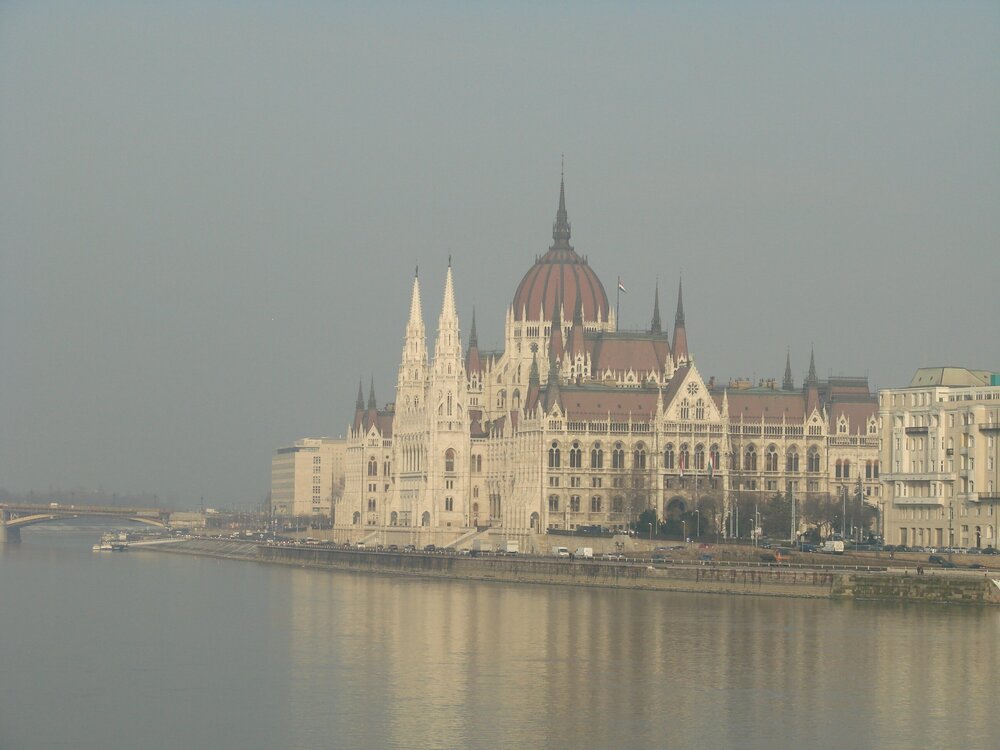
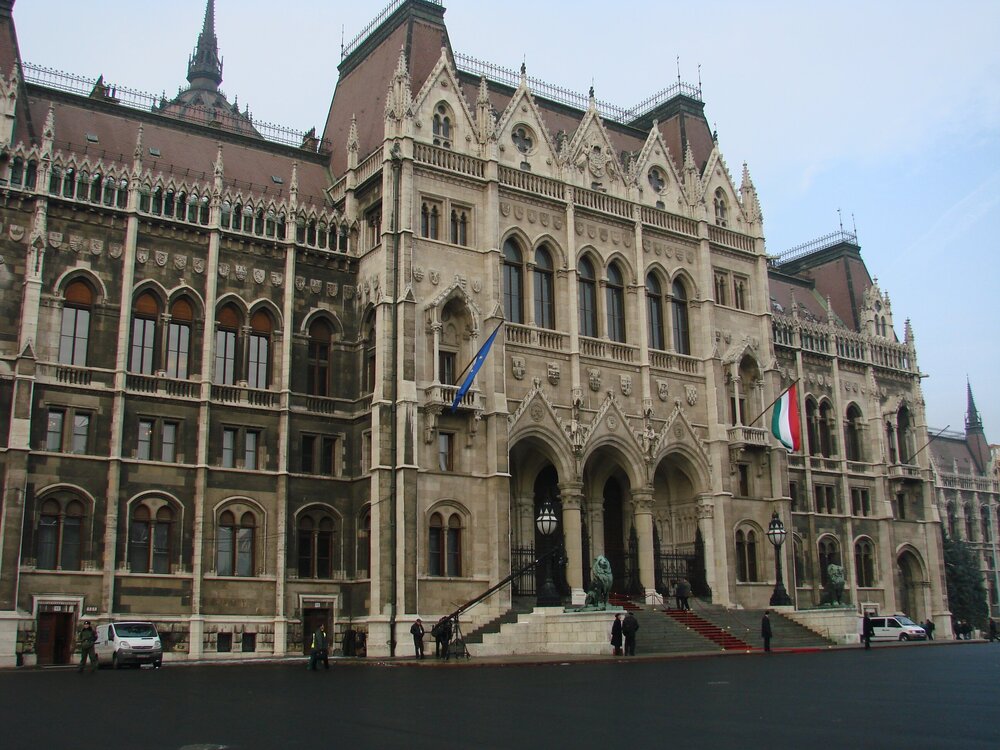
The Parliament building is a working building and can be visited as part of an organized tour when it is not hosting state events. Hour-long tours for groups of 50 people are available in 8 languages, including Russian.
- Working hours: daily, April — October from 8:00 to 18:00, November — March from 8:00 to 16:00. Excursions in Russian at 12:30 and 15:30.
- Admission: adults not EU citizens — 6700 HUF, children and students from 6 to 24 years — 3500 HUF, children under 6 children — free of charge.
- Hungarian Parliament website.
Near the parliament on the Danube embankment, an unusual memorial to the victims of the Holocaust was opened in 2005: 60 pairs of cast-iron shoes — a reminder of the thousands of Jews shot on the banks of the Danube in 1944 and early 1945.
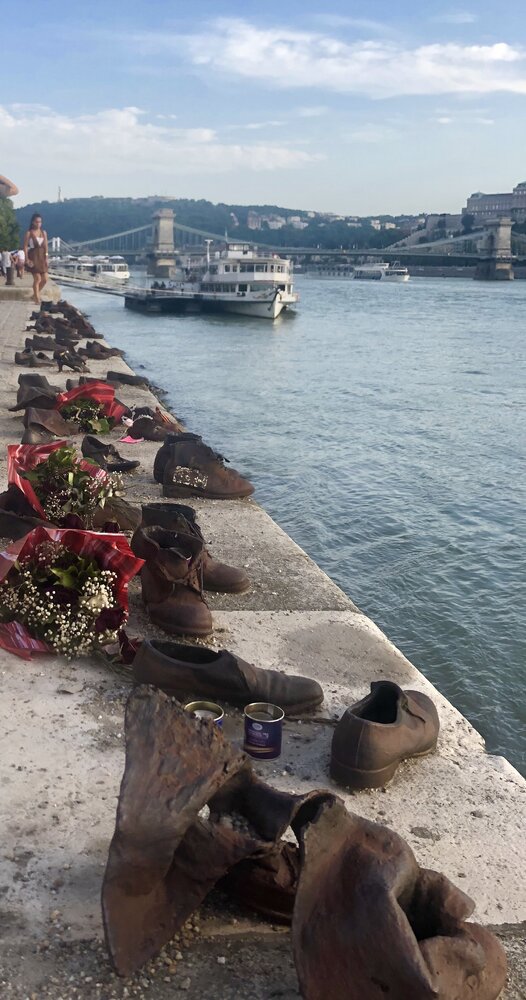
Heroes' Square (Hősök tere)
The main square of the city, built in 1896 on an important place for Hungarian history — here for centuries meetings were held, from here Hungarian crusader groups left.
In the center of the square is the Millennium Memorial, erected to commemorate a round date in the history of Hungary. On top of a 36-meter column in the center of the square is a statue of the Archangel Gabriel with the cross and crown of Hungarian King Istvan. According to legend, it was Gabriel who appeared to St. Istvan, convincing him to unite the Hungarian peoples and spread Christianity in these lands.
Behind the column with Gabriel in a semicircle are two colonnades, more than 80 meters each. They are a common pedestal with a row of columns, between which are monuments to the rulers of Hungary.
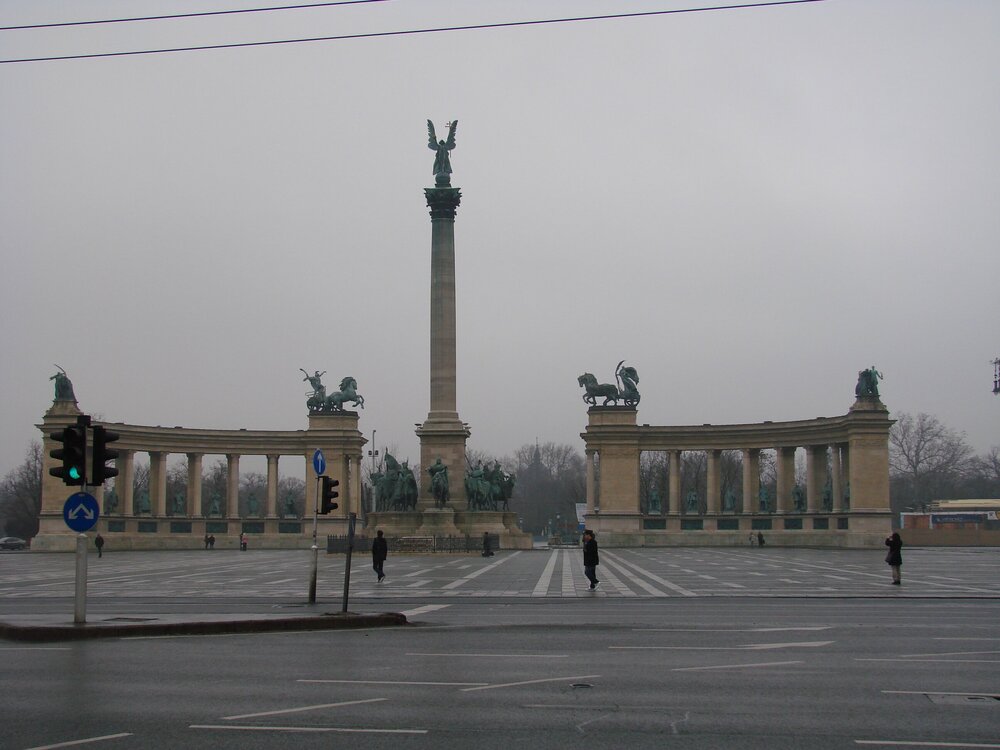
Museum of Fine Arts (Szépművészeti Múzeum)
The museum is located near Heroes' Square and has been operating since 1906. There are about 120 thousand works of art: ancient Egypt and Greece, ancient sculptures, engravings, Impressionist paintings and a collection of paintings by European masters of the XIII–XVII centuries, including works by Rembrandt, Raphael, Titian, Monet and Rodin. On a separate floor Hungarian art of the XVII–XIX centuries is exhibited.
- Working hours: Tuesday — Sunday from 10:00 to 18:00, Monday — day off.
- Admission: ticket for non-EU citizens — 3200 HUF.
- Website of the Museum of Fine Arts in Budapest.
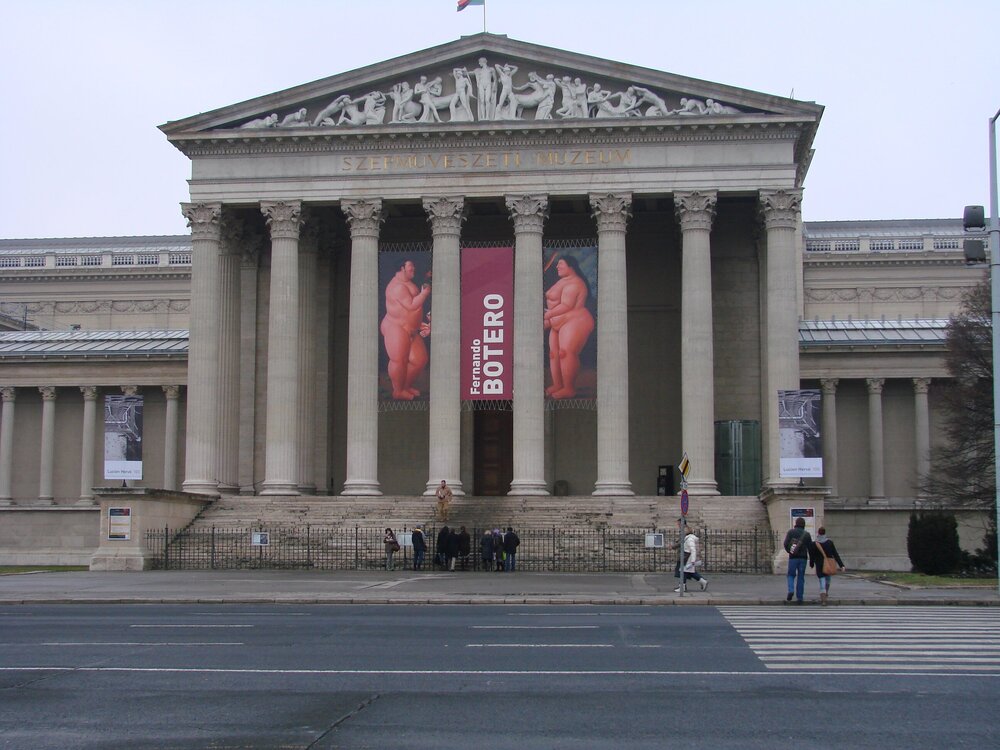
Szent István Basilica (Szent István Bazilika)
This main temple of Budapest was built from 1851 to 1905, in honor of Istvan I, the founder and first king of Hungary, the unifier of the Hungarian lands. During the reconstruction of the temple after its destruction in 1945, a viewing platform was built around the main bell. Inside the temple is interesting with numerous stained glass windows, mosaics, paintings and bas-reliefs. The main value of the basilica is the right hand of St. Istvan. The temple often hosts concerts of organ and classical music.
- Visiting mode for tourists: Monday — Friday from 9:00 to 17:00, Saturday from 9:00 to 13:00, Sunday from 13:00 to 17:00.
- Admission to the basilica is free.
- Working hours of the observation deck: October — June from 10:00 to 16:30, July — September from 10:00 to 18:30.
- Entrance to the observation tower: adults 500 HUF, students and pensioners 400 HUF.
- St. Istvan Basilica website.
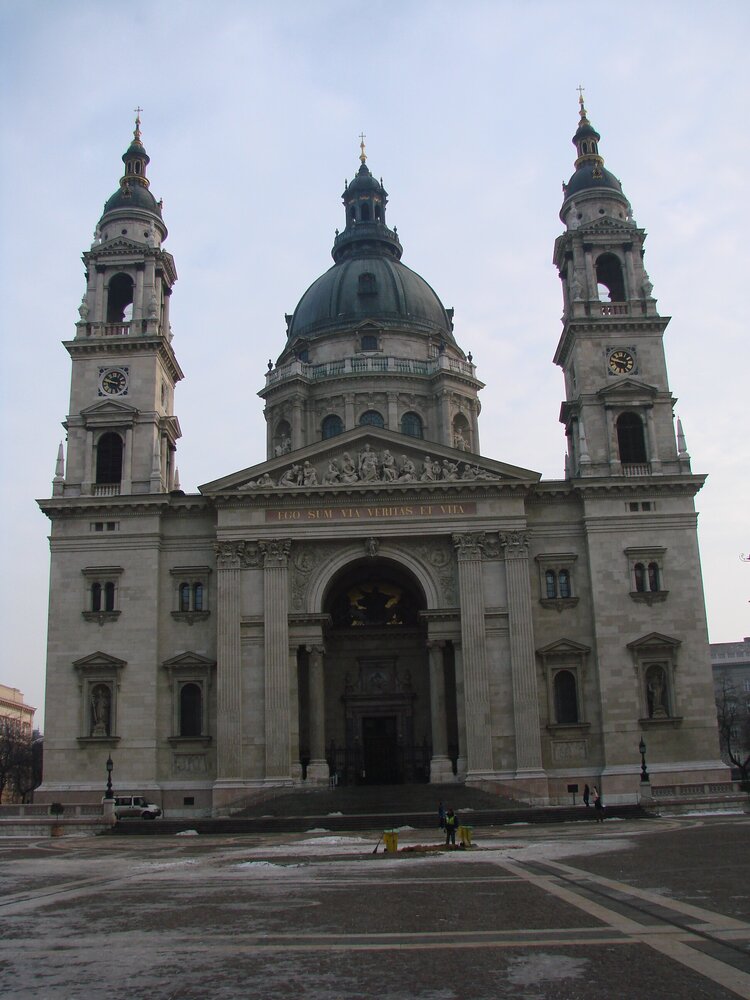
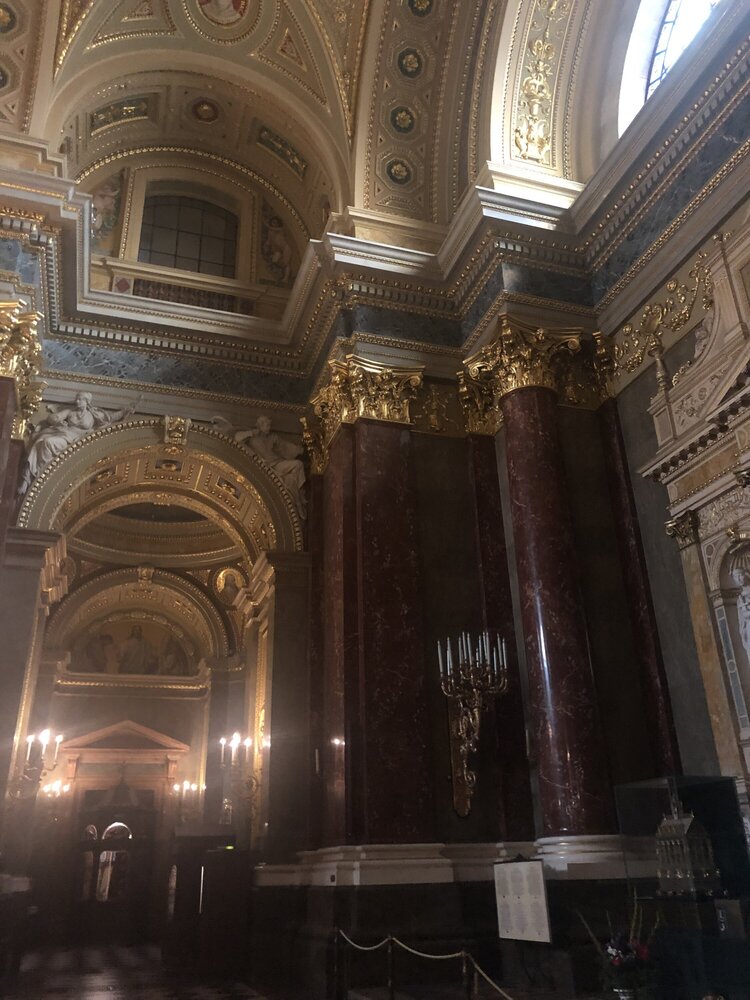
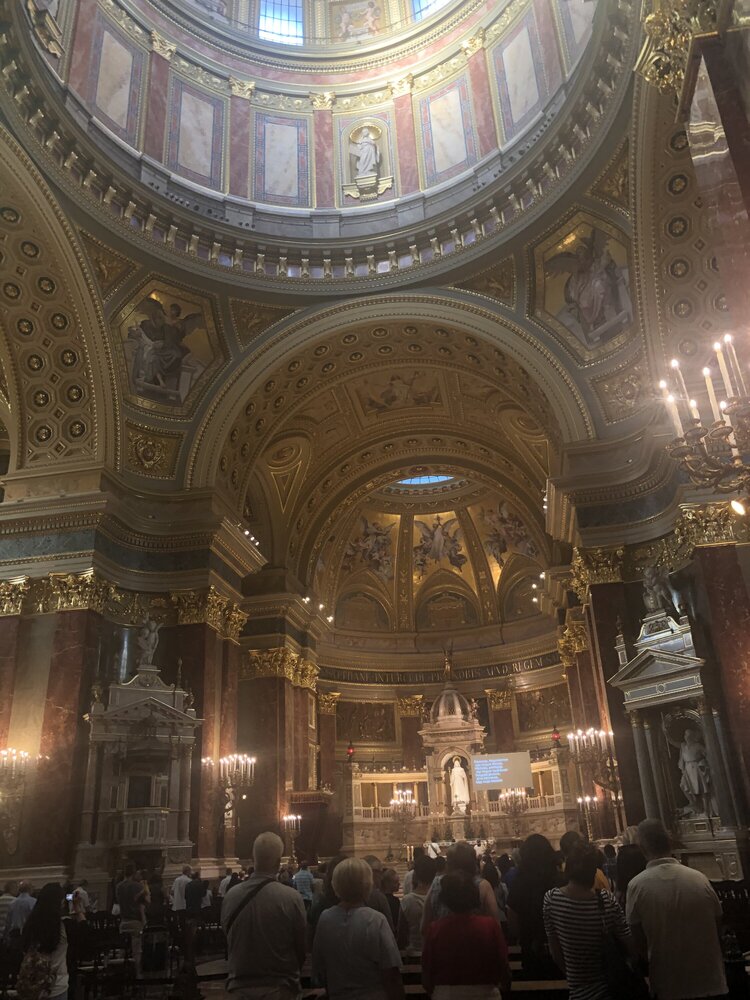
Great Synagogue (Nagy Zsinagóga)
This largest Synagogue in Europe is located in the Jewish quarter of Pest. It can hold 3,000 people at a time. In the courtyard of the synagogue there is a cemetery where about 7000 victims of Nazism are buried. In their memory, an unusual monument — a weeping willow made of metal, with the name of the person who died at the hands of the Nazis engraved on each of its leaves — has been erected on the synagogue’s territory.
- The mode of operation is floating, it is better to check on the synagogue’s website.
- Guided tour: adult — 16 €, students — 12 €.
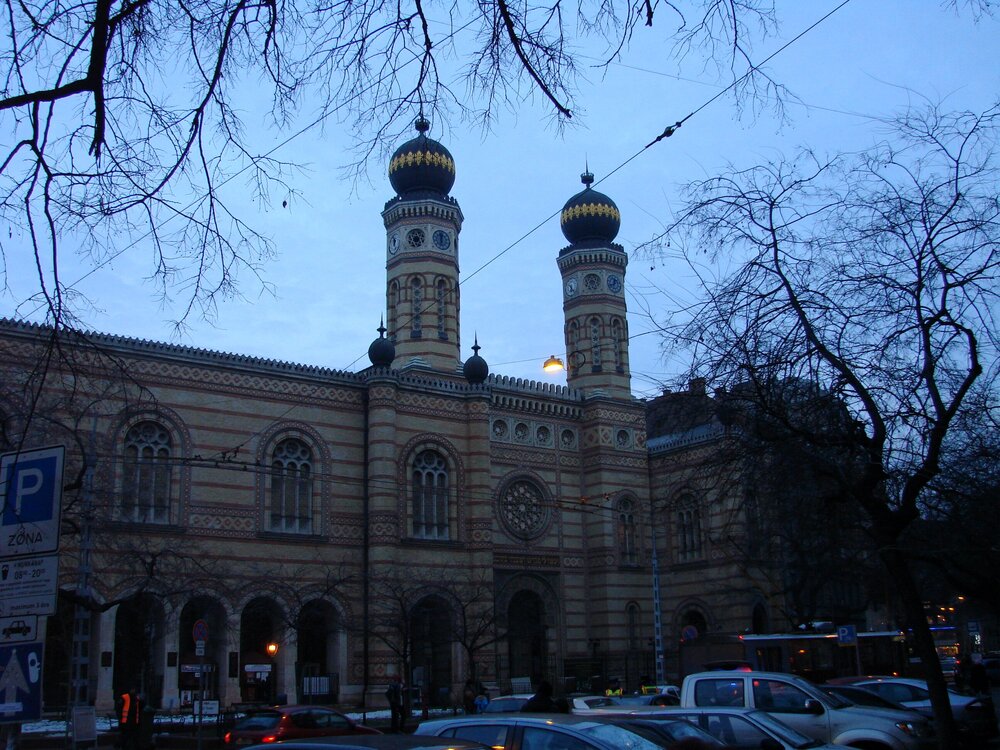
Budapest Central Market (Központi Vásárcsarnok)
The neo-Gothic building of the central market opened in 1897. The original architecture and the large assortment of local products and souvenirs attract crowds of tourists. The first floor houses gastronomic stalls, while the first floor offers souvenirs, traditional handicrafts and cafés with Hungarian cuisine.
- Working hours: weekdays from 06:00 to 17:00—18:00, Saturday from 06:00 to 15:00, Sunday — day off.
- Central Market website.
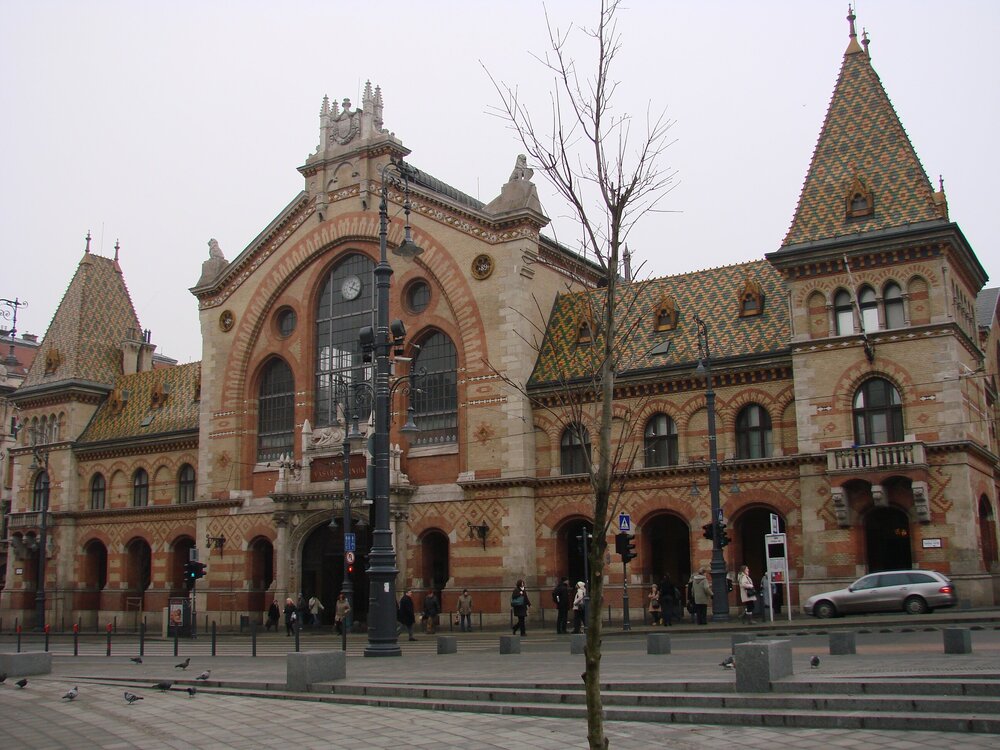
Városliget City Park (Városliget)
Behind Heroes' Square is the Budapest City Park, which was opened in the middle of the 18th century. For a long time this place was a large swamp outside the city limits. In summer, you can go boating or catamaran sailing on the park’s lake, and in winter the largest skating rink in Europe is open here. Thousands of exotic trees, artificial canals and ponds with ducks — there is a lot to admire.
On the territory of the city park there are Szechenyi baths, a circus and several other interesting places.
Vajdahunyad Castle (Vajdahunyad vára)
For the celebration of the millennium of the Hungarian kingdom, a wooden decoration was erected from elements of more than 20 Hungarian famous buildings. The city residents liked it, so they decided to build it out of stone. This is how the main attraction of the city park — Vajdahunyad Castle — appeared. Each tower, wall, gate is a copy of some famous existing architectural masterpiece. For example, there are fragments of the Corvinus Castle from Transylvania, a copy of the Yak Chapel.
On the territory of the castle there is a museum of agriculture, a collection of hunting trophies, a monument to Anonymus, the unknown writer, author of the historical work «Deeds of the Hungarians».
- You can view the castle from the outside 24 hours a day, free of charge.
- Working hours of the Agricultural Museum: daily from 10:00 to 16:00—17:00, except Mondays.
- Admission to the museum: adult — 1600 HUF, students and pensioners — 800 HUF.
- Vaidahunyad Castle Website.
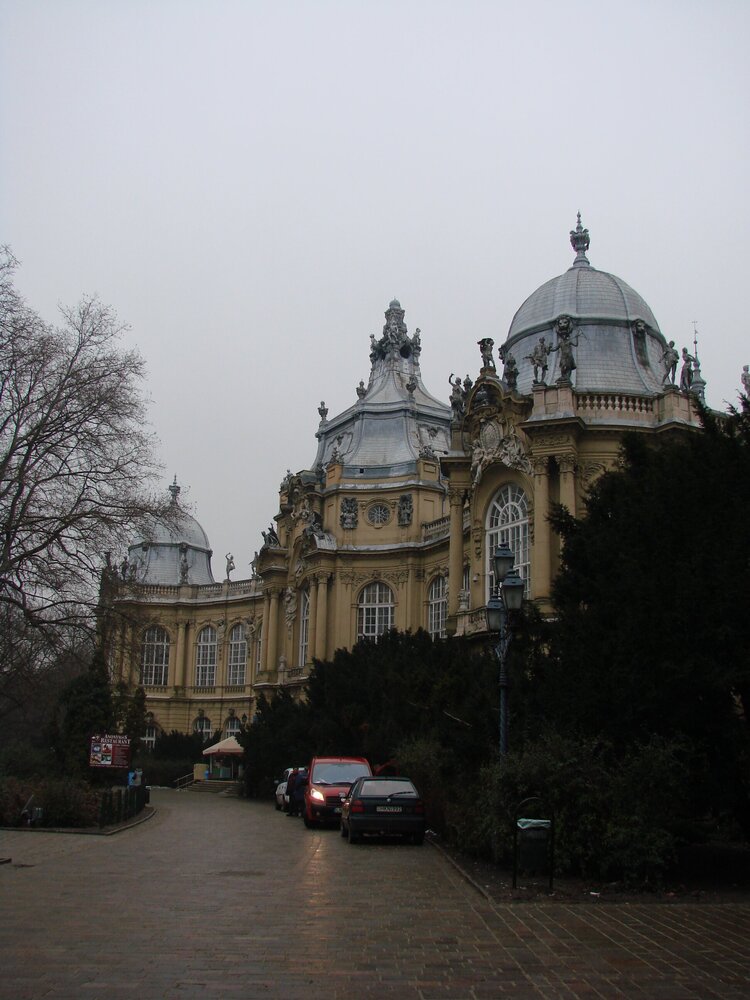
Budapest Zoo (Fővárosi Állat és Növénykert)
The zoo appeared on the territory of the city park in 1866. It is one of the best zoos in Eastern Europe, it has a botanical garden with rare species of plants, and more than 8,000 species of animals live in enclosures and pavilions.
- Mode of operation: from 9:00 a.m. to 4:00 p.m. to 6:00 p.m. depending on the season.
- Admission: adults — 3300 HUF, children from 2 to 18 years — 2200 HUF, children under 2 years — 200 HUF, pensioners from 65 years and students — 2500 HUF.
- Budapest Zoo website.
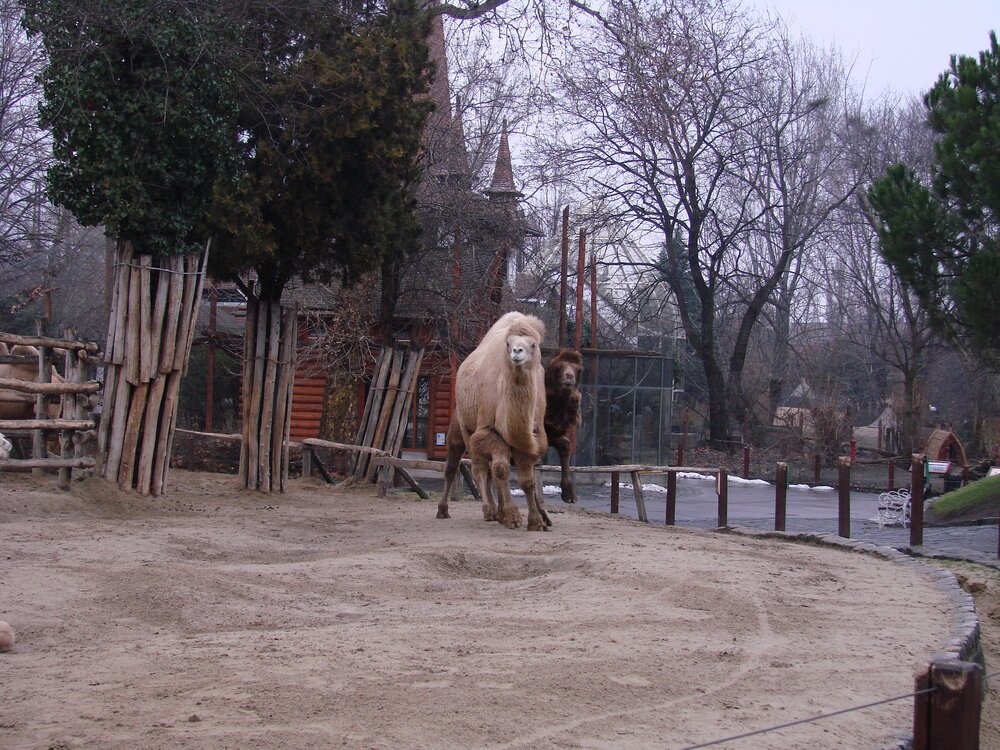
Day 2 in Budapest: Buda
Buda is a hilly part of the city on the right bank of the Danube. One day is enough for sightseeing in Buda. This bank offers the most «postcard» view of the Parliament.
Budai Fortress (Budai Vár)
From the foundation of the castle in the XIII century to the present day, it was destroyed several times: by Turkish invaders in the XV century, by revolutionaries in the XIX century, during the liberation of the city during the Second World War. And each time it was rebuilt anew. The fortress was once the residence of Hungarian kings, and in 1987 it was included in the UNESCO World Heritage List.
There are interesting old buildings on the castle grounds, such as the Sándor House — the residence of the Hungarian president and the yellow building of the castle theater.
It can take a whole day to see the entire fortress, walk around all the walls, gates, castle, fountains and sculptures, look in the museums. Each statue has a legend. For example, the raven on the gate appeared after a black bird stole the wedding ring from his bride during the marriage of King Matyash, and soon after the wedding the young queen died. He considered it a sign, put a statue of a raven on the gate and added it to his coat of arms.
You can see information about all the sights of Buda Fortress on the website. I will tell you about the most interesting places.
Royal Palace (Budavári Palota)
The center of the Buda Fortress is the Royal Palace with sculptures, fountains and observation decks on the Danube.
There are two museums in the palace:
Hungarian National Gallery (Magyar Nemzeti Galéria)
The largest collection of fine art in the country. The gallery contains about 100 thousand works of art by Hungarian masters and occupies three wings on several floors of the palace.
- Working hours: from 10:00 to 18:00, Monday — day off.
- Admission: adults — 3200 HUF, children under 6 years old are free.
- Website of the Hungarian national gallery.
Budapest History Museum (Budapesti Történeti Múzeum)
In the museum you can see the interior of several rooms of the Royal Palace and artifacts related to the history of Hungary. All eras are represented here, from Roman times to World War II. A large collection of archeological finds and handicrafts: tableware, textiles, household items, clothing, and historical photographs.
- Working hours: from 10:00 to 18:00, Monday — day off.
- Admission: adults — 2400 HUF, children and students from 6 to 26 years old, pensioners over 65 years old — 1200 HUF.
- Budapest History Museum website.
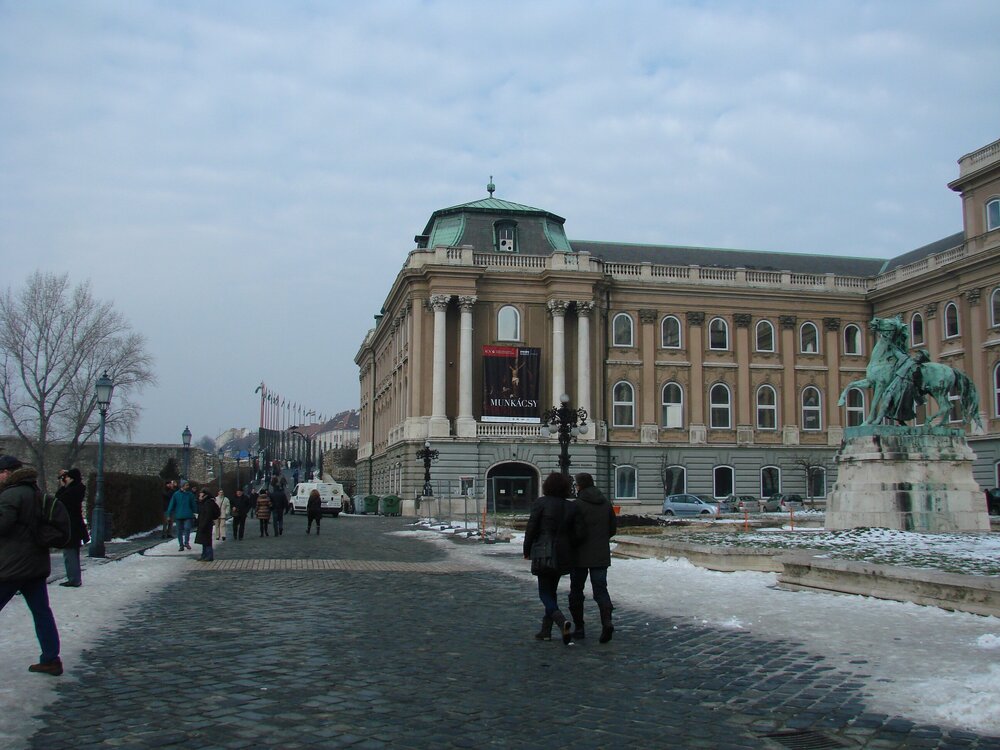
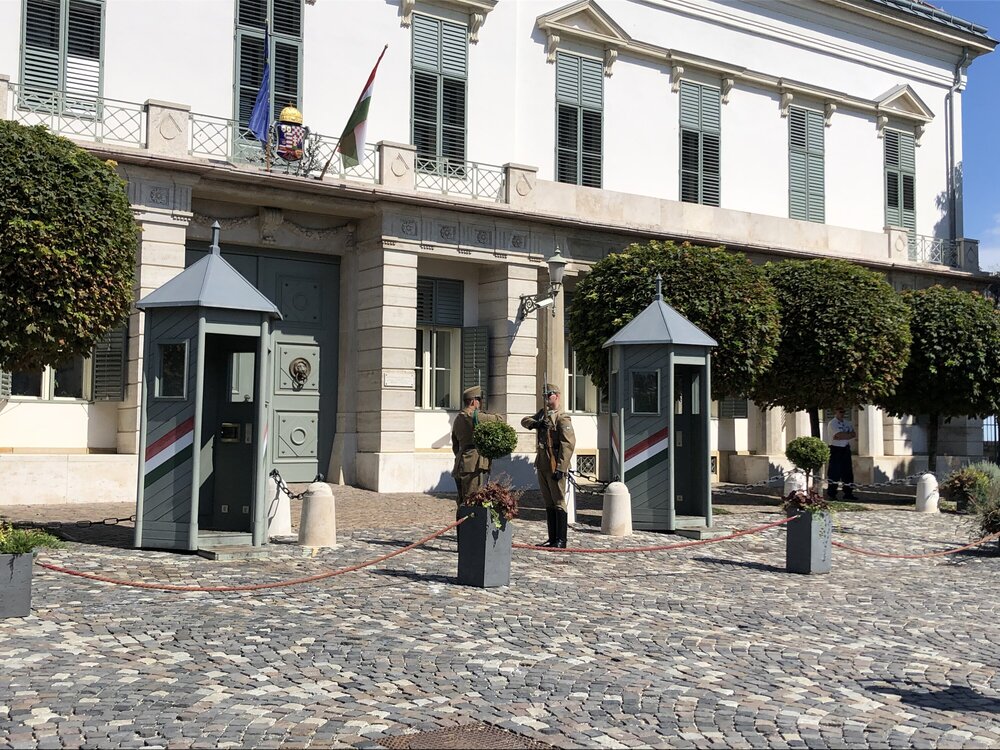
National Library (Budapesti Országos Széchényi Könyvtár)
The halls contain almost ten million books, many of which date from the 15th to 17th centuries. All documents relating to Hungarian history can be found here. But the outside of the building is also an eye-catcher — the library is on the UNESCO list.
- Hours of operation are Tuesday through Friday from 9:00 a.m. to 5:00 p.m., Saturday until 2:00 p.m.
- Corwin Library website
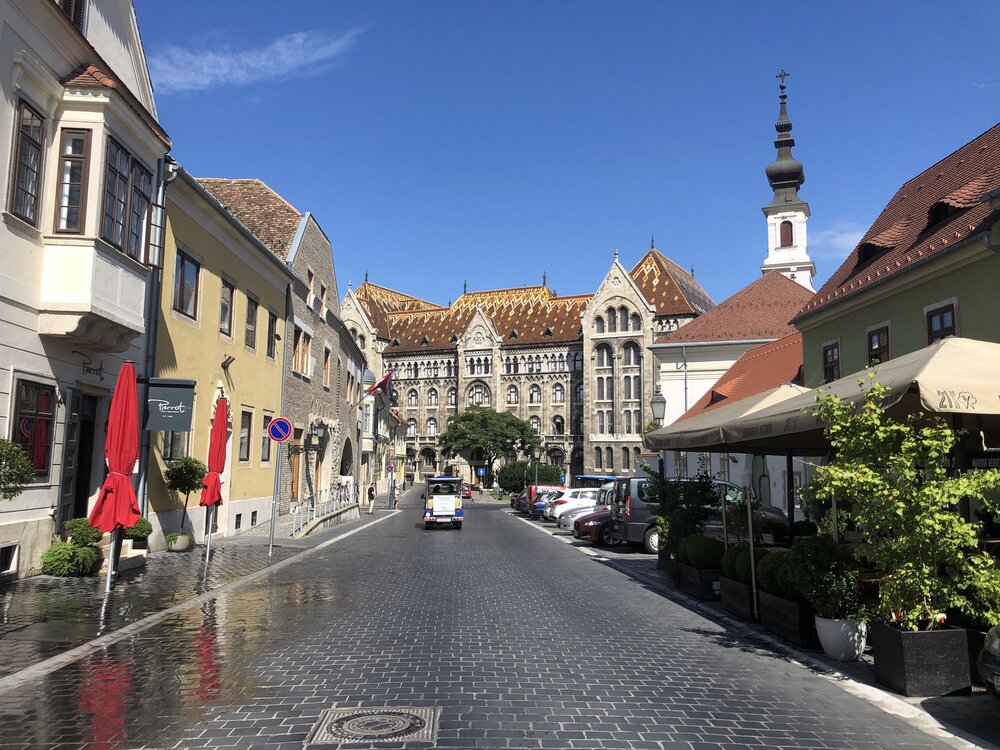
Fisherman’s Bastion (Halászbástya)
The construction of the fishermen’s bastion began in 1889 and was completed in 1905. The project was designed by Hungarian architect Fridyes Szulek, and the restoration of the bastion after the Second World War was undertaken by his son Janos.
The bastion stands on the site of an old fisherman’s market and was never used as a fortification. It is a panoramic observation deck from which you can see the Danube, Pest and Margit Island. The architectural structure is built in neo-Gothic style of white stone, has seven towers and a gallery 140 meters long.
- Admission to the lower terraces of the bastion is free at all times.
- Opening hours of the upper towers: daily from 8:00 to 20:00.
- Admission: adult — 1000 HUF, students — 500 HUF, children under 6 years old — free of charge. From 8:00 to 9:00 — admission is free.
- Fisherman’s Bastion website.
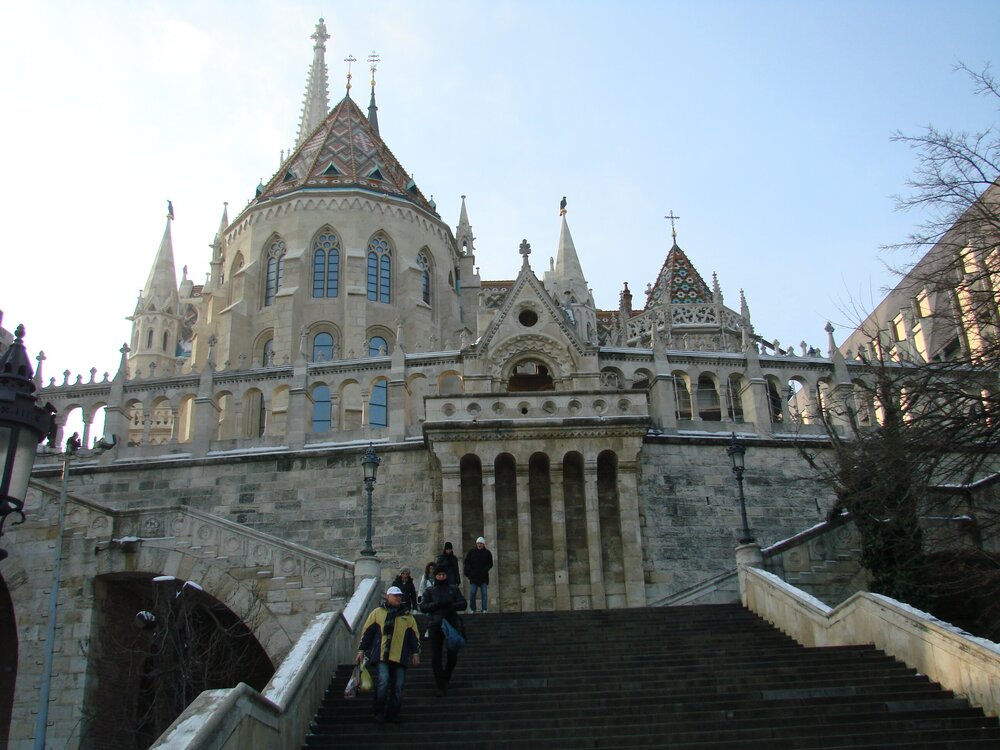
Mátyás Church (Mátyás Templom)
St. Matyas Church is a Catholic church in the Gothic style where Hungarian monks were crowned. The first building was laid out by St. István back in the eleventh century. Inside the church is kept a copy of the Hungarian crown, which crowned all monarchs since the beginning of the state, and installed the largest organ in Hungary weighing 60 tons. The church hosts organ concerts and choral singing, and their schedule can be found on the church’s website.
- Working mode: Monday — Friday from 9:00 to 17:00, Saturday from 9:00 to 12:00, Sunday from 13:00 to 17:00.
- Admission: adult — 1800 HUF students and pensioners 1200 HUF, children under 6 years old — free of charge.
- Tourists are not allowed in during the service. If you say you are here for Mass, you can enter for free, but you will not be able to walk around and look around the temple.
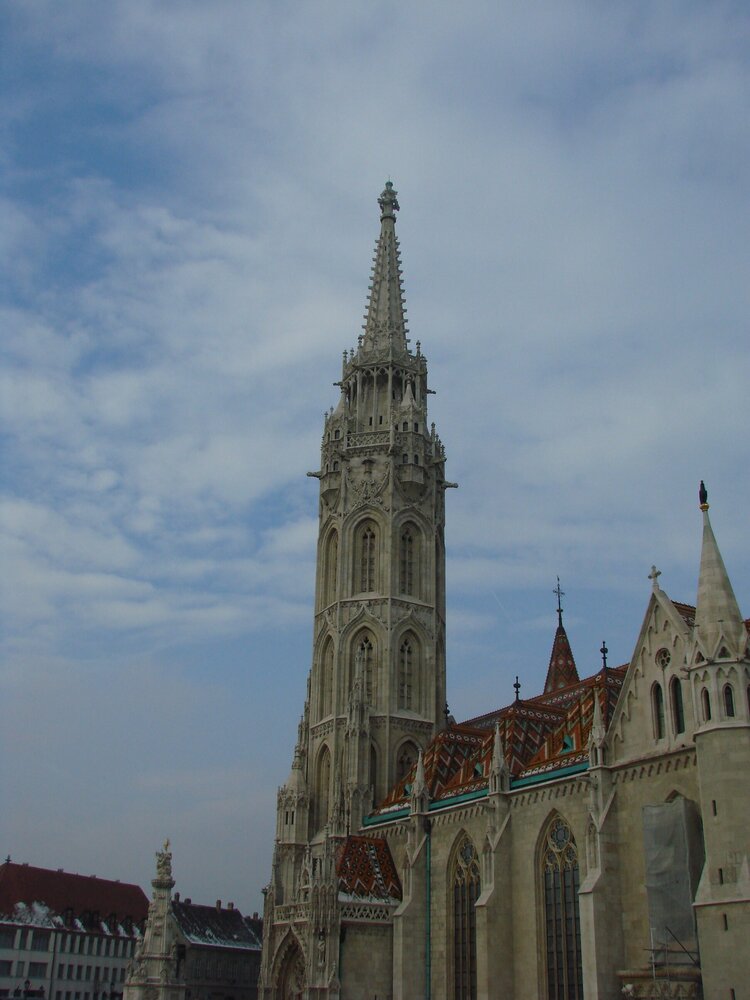
Thermal baths in Budapest
Budapest stands on mineral springs, and its main difference from other European capitals is its thermal baths. There are 13 healing baths with healing water in Budapest. I will tell you about the most popular ones.
Szechenyi Thermal Baths (Szechenyi Furdo)
It is the largest thermal complex in Europe and was built between 1909 and 1913. The neo-Renaissance building has numerous thermal pools, saunas and baths. The two outdoor pools with hot mineral water can be used at any time of the year.
- Mode of operation: daily from 6:00 to 22:00.
- Admission: a full-day ticket with stall rental is 6000 HUF on weekdays, 6200 HUF on weekends or holidays. All prices can be found on the website of the spa.
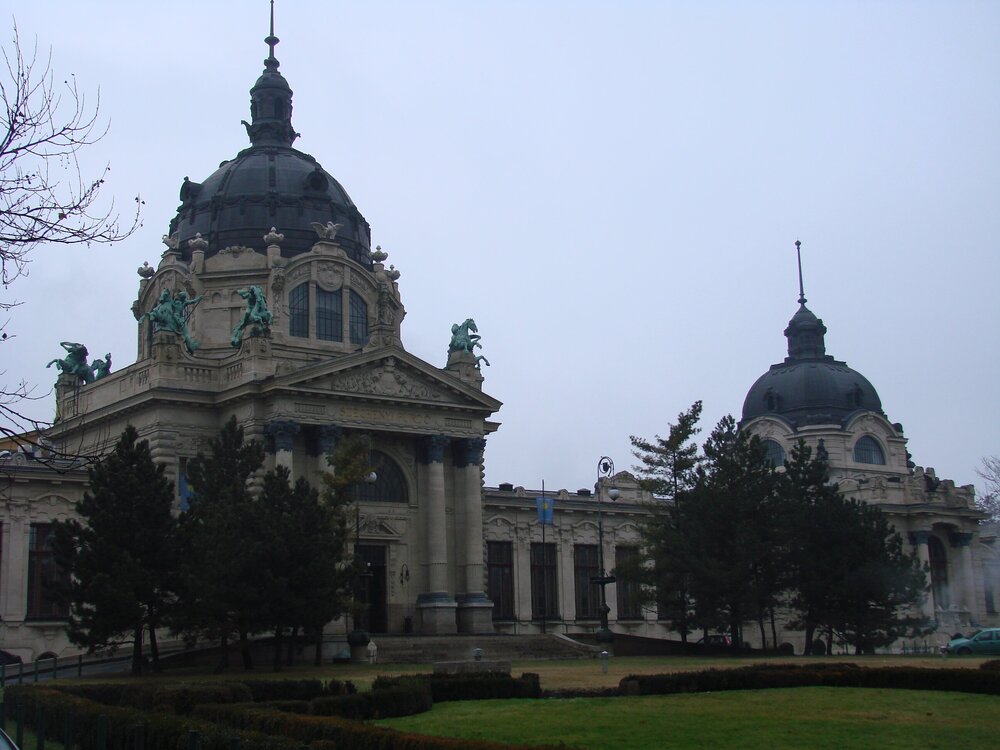
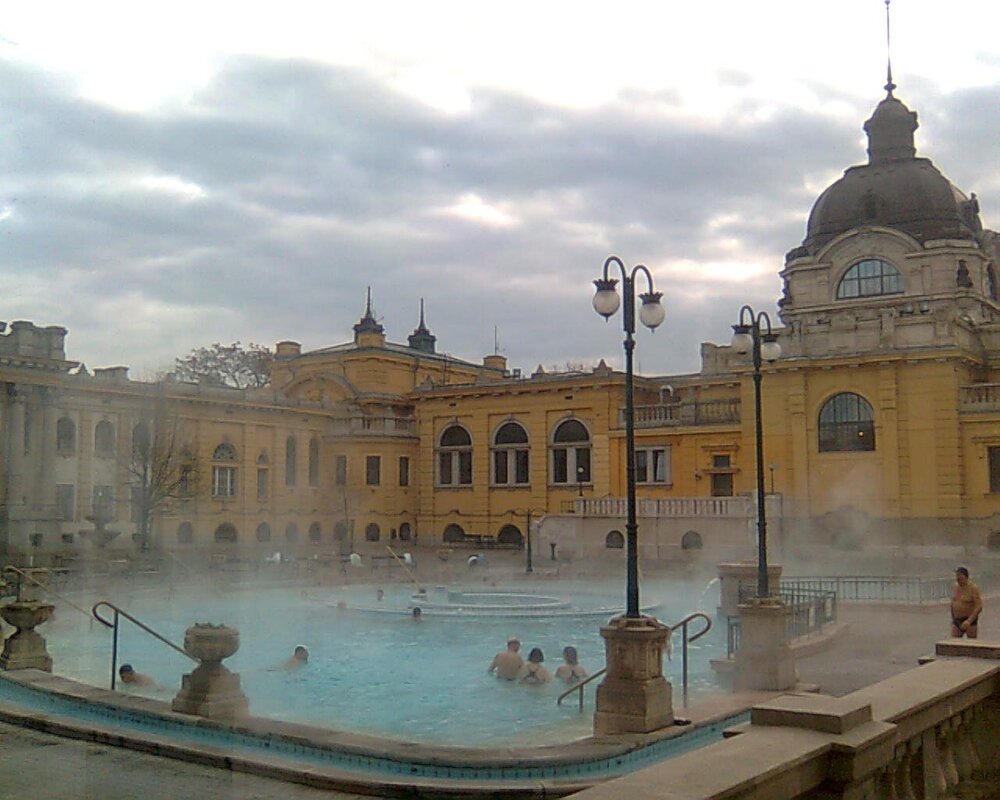
Gellért Baths (Gellért Gyógyfürdő és Uszoda)
The Art Nouveau Gellert Baths are considered to be the most beautiful in Budapest and were built by 1916. During the war, the bath complex was completely destroyed, and it was not fully restored and reopened until 2008.
The mineral water in the complex comes from the natural springs of Mount Gellert, rich in sodium, calcium and magnesium. The spa has two outdoor pools and 10 indoor pools, various SPA procedures.
- Mode of operation: daily, from 6:00 to 20:00.
- Admission: weekdays for adults, with locker — 5900 HUF, with stall — 6300 HUF; weekends and holidays with locker — 6100 HUF, with stall — 6500 HUF.
- Gellert Spa website.
Other interesting baths in Budapest
- Rudas (Rudas gyógyfürdő). A 16th century Turkish bathhouse with a Jacuzzi on the roof. Tuesday entrance is for women only, other weekdays for men. On weekends and Friday after 13:00 the bath is open to all.
- Lukács (Szent Lukács gyógyfürdő). A bathhouse that has been in operation since the time of the Crusades. It is considered to have the most therapeutic water.
- Király Fürdő (Király Fürdő). An old Turkish bathhouse from the 16th century, the water is piped in from the Lukáš bathhouse.
- Római (Római Strandfürdő). A bathing area with two centuries of history. Nowadays, this open-air bathing area with water slides is only open in summer.
A site where you can find information about all the bathing baths in Budapest.
Budapest bridges
A separate attraction of the city are the bridges connecting Pest and Buda. Now there are 9 bridges in Budapest. Five of them were rebuilt after the war: Széchenyi, Liberty, Margit, Erzsébet and Petőfi. The other four are modern projects.
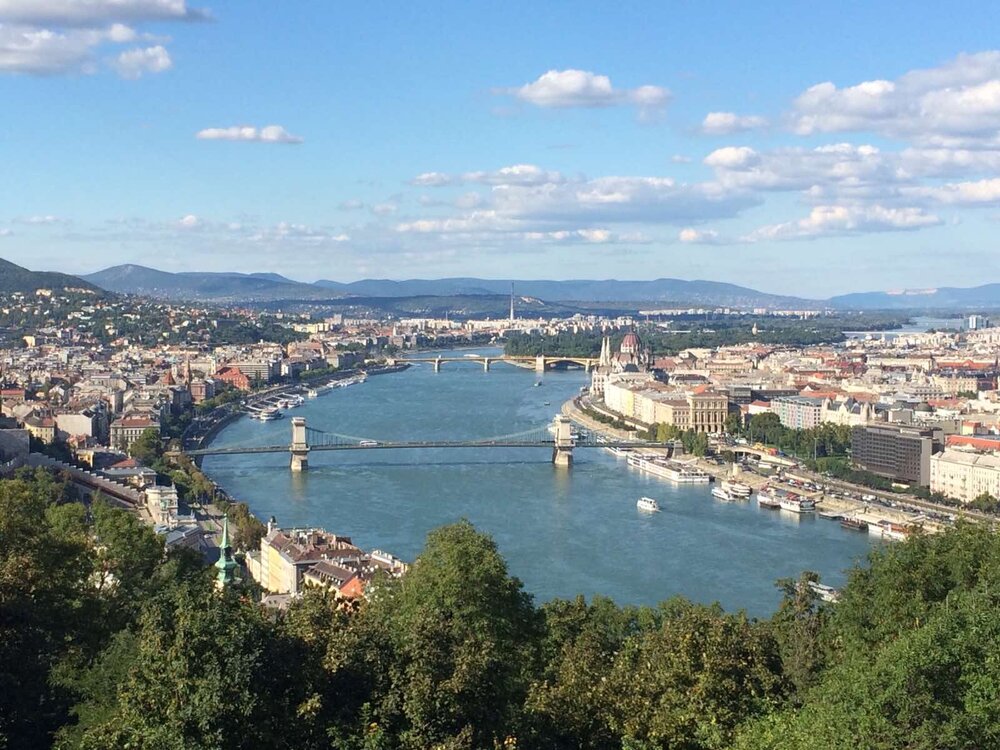
Széchenyi Chain Bridge (Széchenyi lánchíd)
The suspension bridge over the Danube, between Buda and Pest, was designed on the initiative of Count István Széchenyi. It was opened in 1849 — it was the first bridge across the Danube in the whole of Hungary.
The bridge is 375 meters long and has a road for transport and pedestrian sidewalks. It takes 15 minutes to walk across the bridge.

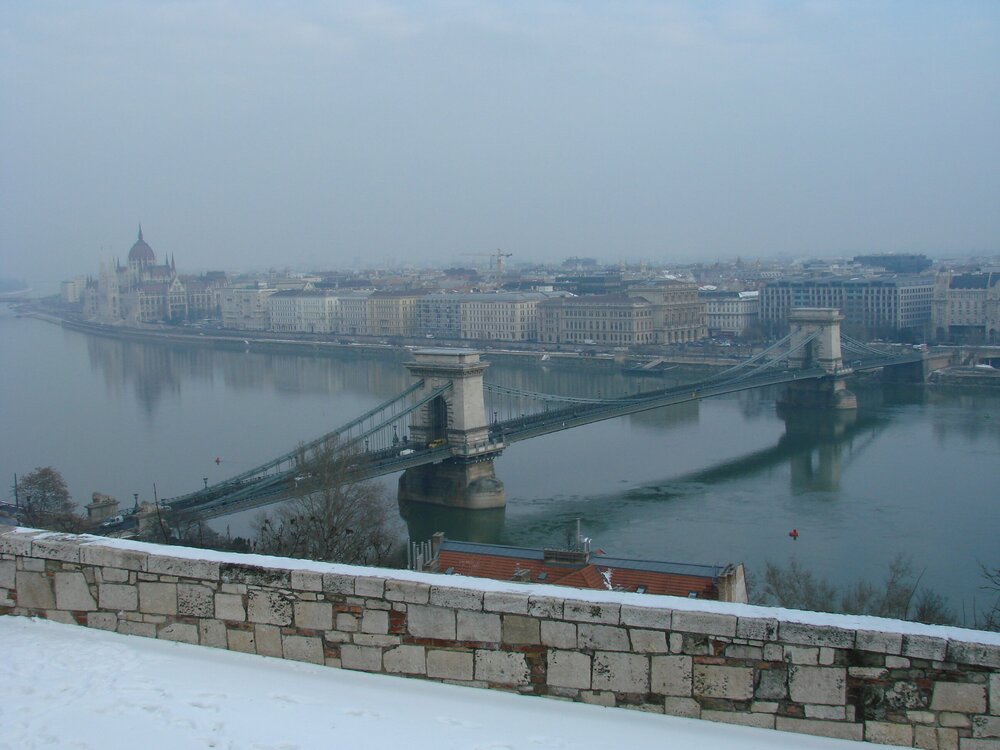
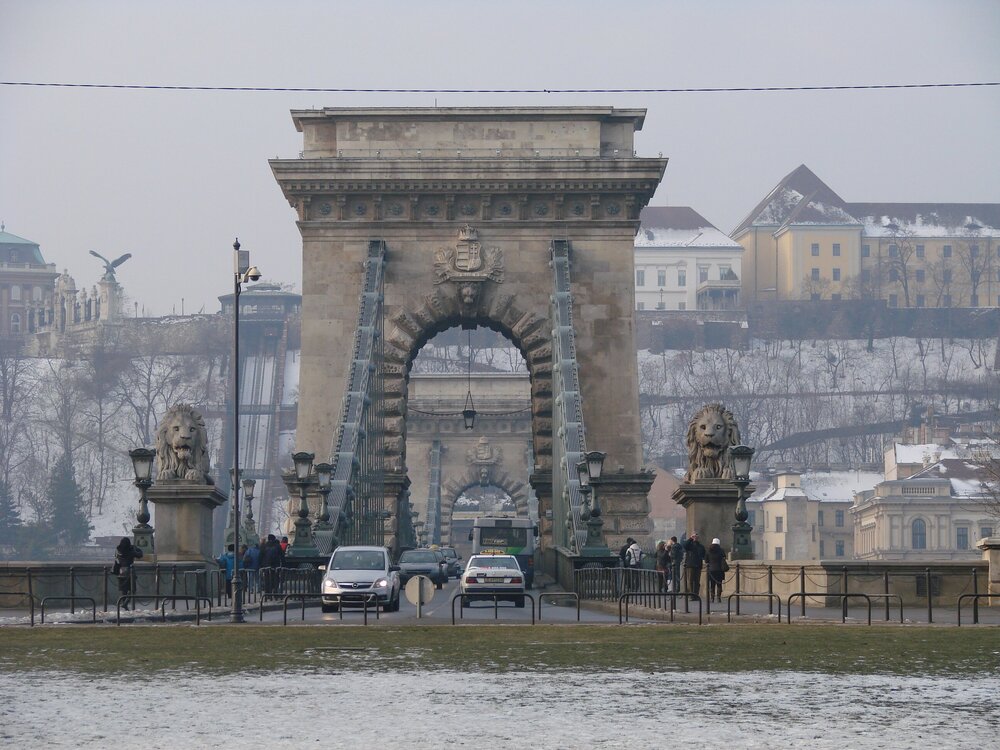
Freedom Bridge (Szabadság híd)
The second most popular and beautiful bridge in Budapest was built in 1890 and was named in honor of Emperor Franz Josef. During the war, this bridge suffered the least damage, so it was rebuilt first and in 1946 it received a new name — Freedom Bridge. It is 333 meters long and the four pinnacles feature birds from Hungarian legends.
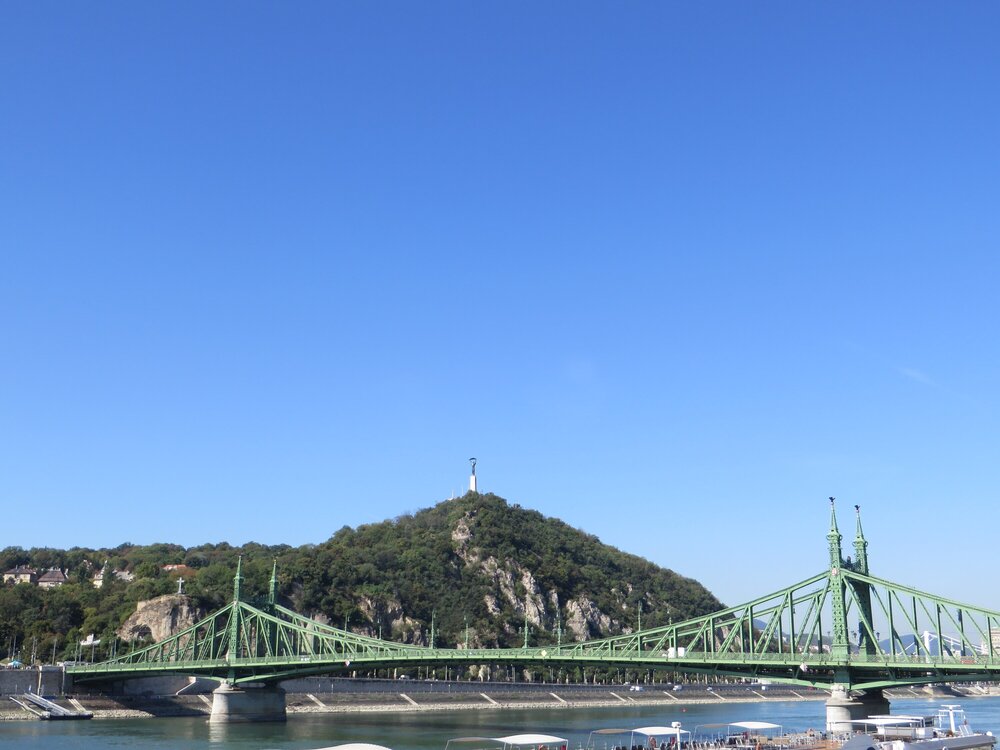
How many days do I need for Budapest? You can see all the sights fluently in one day. Two days are enough to see them leisurely. In three or four days you can visit the famous Budapest Thermae and plunge into the rhythm of the hipster quarter. A week is the perfect amount of time to explore both Budapest and the surrounding area.
Useful information:
Budapest Tourism Website.

